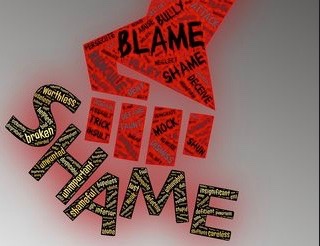The dystopian-thriller film Children of Men (directed by Alfonso Cuarón)
It’s been a very long time since I last posted here (much longer than I intended), but I will grant myself some leniency since most of my time and effort was spent finishing my second book and first full-length novel Let Us Sleep Now. The reason I’m posting now is because we’re approaching the final days before my book releases into the world and I thought it might be fun to discuss the various artistic influences/inspirations of the book.
As you might have guessed from the picture above a significant influence on my upcoming novel’s tone and genre was the 2006 dystopian-thriller Children of Men. The film is set in a near future where humanity has become sterile resulting in a sudden end to pregnancy and childbirth. In the following decades society has started to collapse as humanity prepares for its inevitable end. Though my book deals with overpopulation and a global one-child policy, a problem on the complete opposite end of the spectrum, I was greatly inspired by the film’s gritty tone and portrayal of how such an issue becomes yet another way for those in power to widen the racial and economic divides already present in our society.
When I first started writing Let Us Sleep Now I didn’t initially picture it as a crime-thriller, but it gradually began to morph into one as some of my favorite crime films, such as Christopher Nolan’s The Dark Knight and Martin Scorsese’s The Departed, surfaced in my well of inspirations. In retrospect it makes sense though since the two main characters that drive the plot forward are a Population Control officer and a protestor turned guerrilla/freedom fighter. So while this isn’t your typical “cops and robbers” tale by any means there are definite parallels to those types of stories.
Psychedelic-horror film Mandy (directed by Panos Cosmatos)
I’ll do my best to avoid spoilers for the film, and my novel as well, but another unexpected inspiration that one of my editors picked up on is the 2018 film Mandy starring Nicolas Cage. It is a very trippy horror film and those familiar with it may notice certain similarities involving terrifying drug hallucinations and bizarre religious sects. That’s all I dare to say about that for now…
On the more bookish side of things, since this is a novel after all, it would be remiss of me to not mention the two literary giants of Philip K. Dick and Flannery O’Connor. If we’re being honest pretty much any urban-dystopia/cyberpunk writer is indebted to Philip K. Dick whether due to his prolific number of novels or the many film adaptations of his works, such as Blade Runner, Minority Report, or A Scanner Darkly. He’s been given the retrospective moniker of “Grandfather of Cyberpunk” due to his overwhelming influence on the genre though his work predates the term by several decades.
According to Wikipedia, “cyberpunk is a subgenre of science fiction in a dystopian futuristic setting that tends to focus on a ‘combination of lowlife and high tech’, featuring futuristic technological and scientific achievements, such as artificial intelligence and cybernetics, juxtaposed with societal collapse, dystopia or decay.” While I wouldn’t consider my novel Let Us Sleep Now to be a cyberpunk novel it does share some similarities with the genre. Some aspects of my book that are inspired by Philip K. Dick’s novels are: unique religious movements, fictitious mind-altering drugs, questioning what is real, and philosophical dilemmas of morality.
Those familiar with Steven Spielberg’s film adaptation of Minority Report may also notice the inspiration for my novel’s mechanical arachnid named Franklin.
The “Queen of the Southern Gothic” also known as Flannery O’Connor has always had a significant impact on my writing. O’Connor’s work shined a light on the darker areas of Southern life exposing the religious hypocrisy and the moral/cultural decay of a region living in the shadow of an overwhelmingly ugly past. Speaking as both a Christian and a Southerner herself, O’Connor once said, “I think it is safe to say that while the South is hardly Christ-centered, it is most certainly Christ-haunted.”
As someone that was born and raised in the South, I’ve also seen aspects of its darker side as well. Many of the same folks that will hold the door for you and end their sentences with a polite “yes ma’am” or “no sir,” common hallmarks of ‘Southern hospitality,’ will be the same ones that single you out and turn on you the moment you display the first indications of nonconformity. I’ve often joked that in the South even the serial killers are devout Christians. In my novel Let Us Sleep Now a faction of domestic terrorists known as “the Revenants of the Confederacy” use a unique blend of historical revisionism and corrupted spiritualism to justify their heinous acts of brutality.
Let Us Sleep Now releases on Amazon in paperback and e-book on July 1st! I hope you’ll join me on this journey into an alternate future that could share glimpses into a world not-so-different than our own.


















